Interview: Rindon Johnson on poetry, identity and imagined futures
In a new show at Chisenhale Gallery, London, American artist Rindon Johnson explores identity, belonging and the space between physical and virtual realities
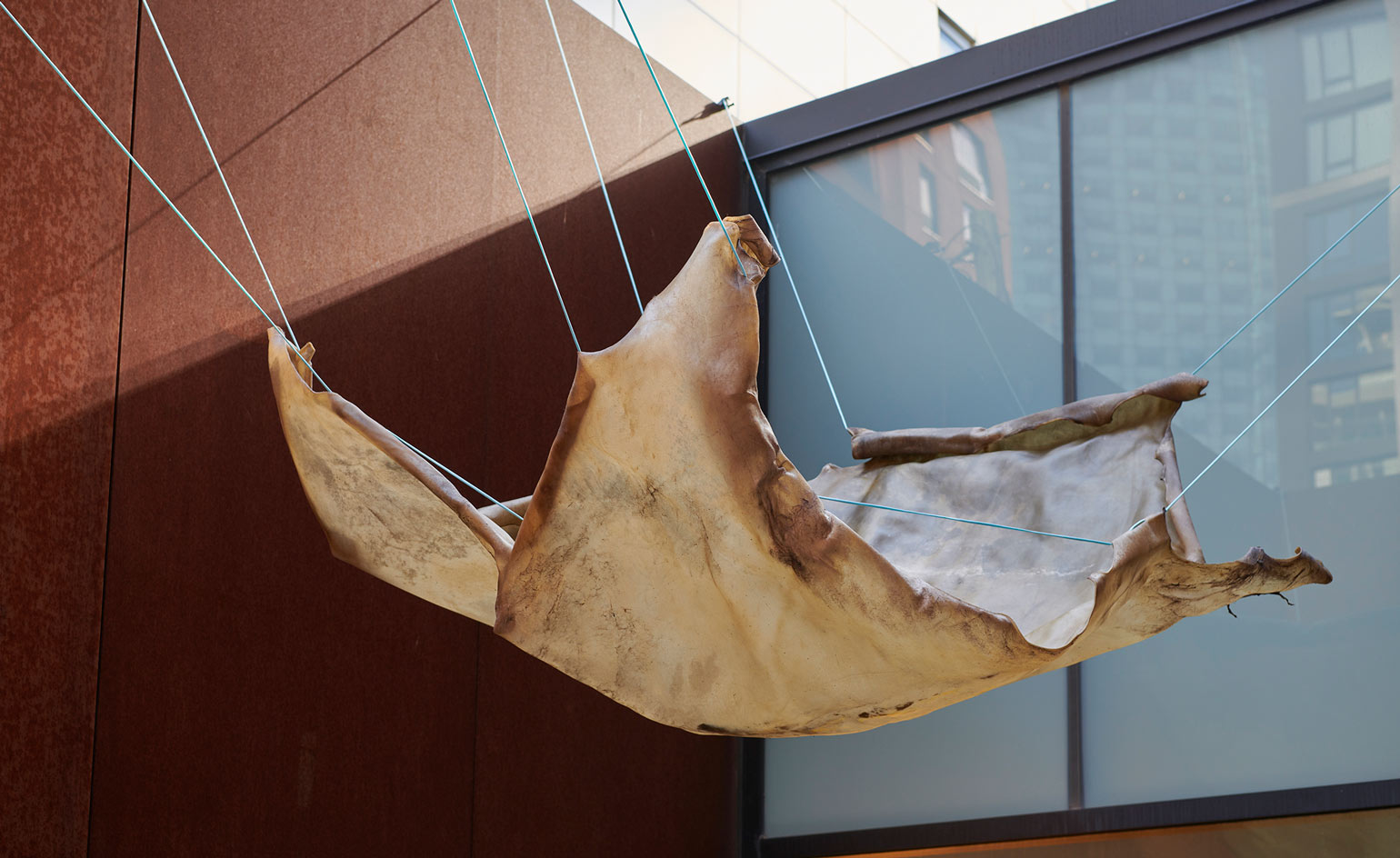
The art of American artist Rindon Johnson is rooted in language and fluid in media. In a recent show at SculptureCenter New York, and a newly-opened presentation at Chisenhale Gallery, London, Johnson traverses a wide range of subjects, from his identity as a Black trans American, to the environmental crisis and the space between actual and virtual realities. Through sculpture, installation, poetry, writing, virtual reality film and painting, Johnson probes at the very core of belonging.
Earlier this year, Johnson’s ‘Law of Large Numbers: Our Bodies’ at the SculptureCenter, New York comprised commissioned sculptures, rawhide works, and video which dominate the ground floor galleries, lobby, and outdoor spaces.
The artist’s companion exhibition ‘Law of Large Numbers: Our Selves’, has just opened at London’s Chisenhale Gallery, which includes reconfigured and additional works.
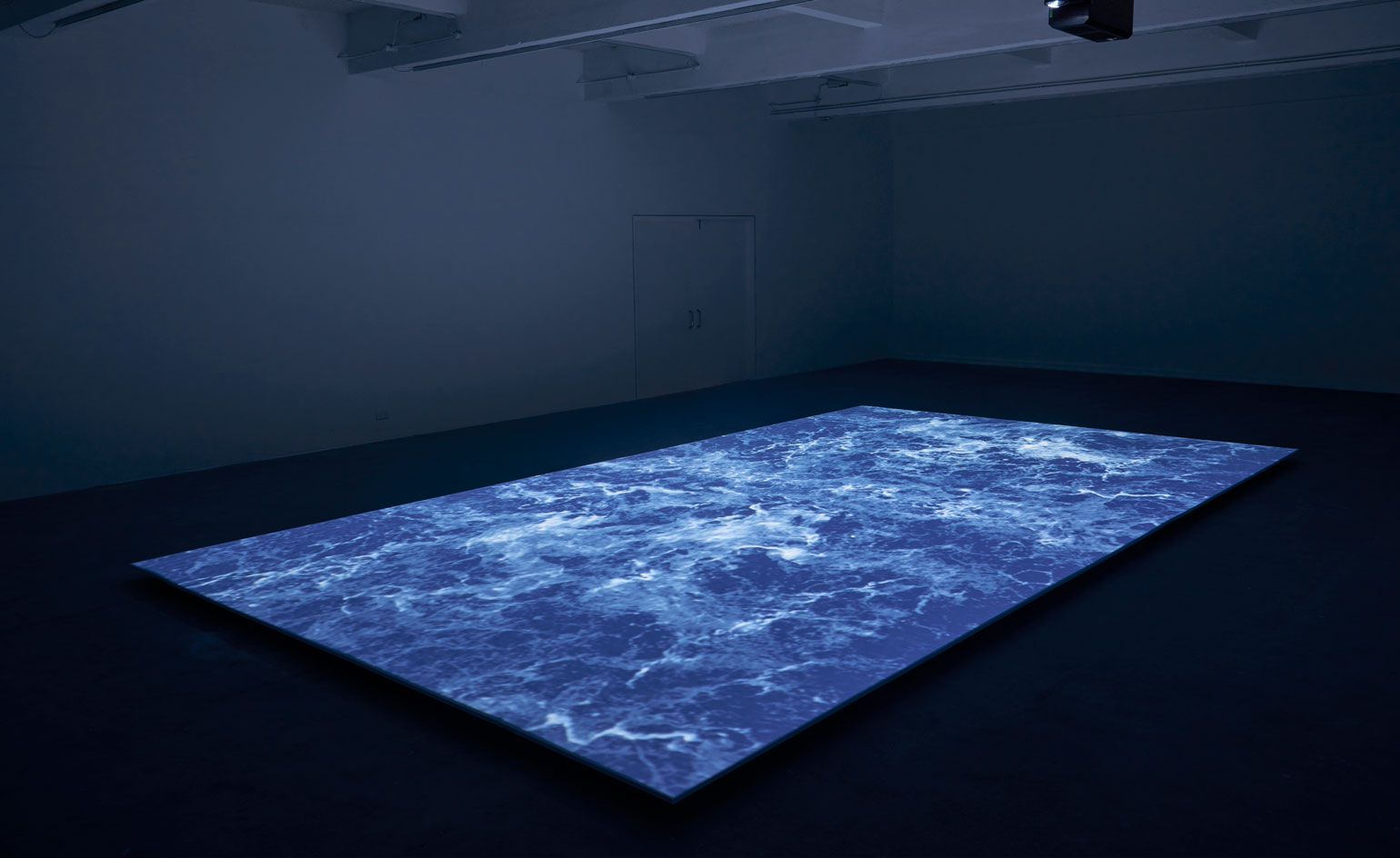
Rindon Johnson, Coeval Proposition #2: Last Year’s Atlantic, or You look really good, you look like you pretended like nothing ever happened, or a Weakening (2021). Installation view Chisenhale Gallery, 2021. Commissioned and produced by Chisenhale Gallery, London and SculptureCenter, New York, 2021.
In the large-scale sculpture, Coeval Proposition #1: Tear down so as to make flat with the Ground or The *Trans America Building DISMANTLE EVERYTHING, Johnson references the Transamerica Pyramid in San Francisco, an iconic landmark of the city’s skyline. The building’s concrete, steel, and glass with a facade covered in crushed white quartz has been reimagined in reclaimed redwood and ebonised, or darkened. As Johnson writes, this process allowed him to ‘more readily see myself reflected in the building which by name and location reflects my trans identity back to me (we share a name) – my skin is brown, almost nearly Black in certain light.’
We spoke to Johnson earlier this year about the fusion of language and art, the power of science fiction, and the inspiration behind the new shows.
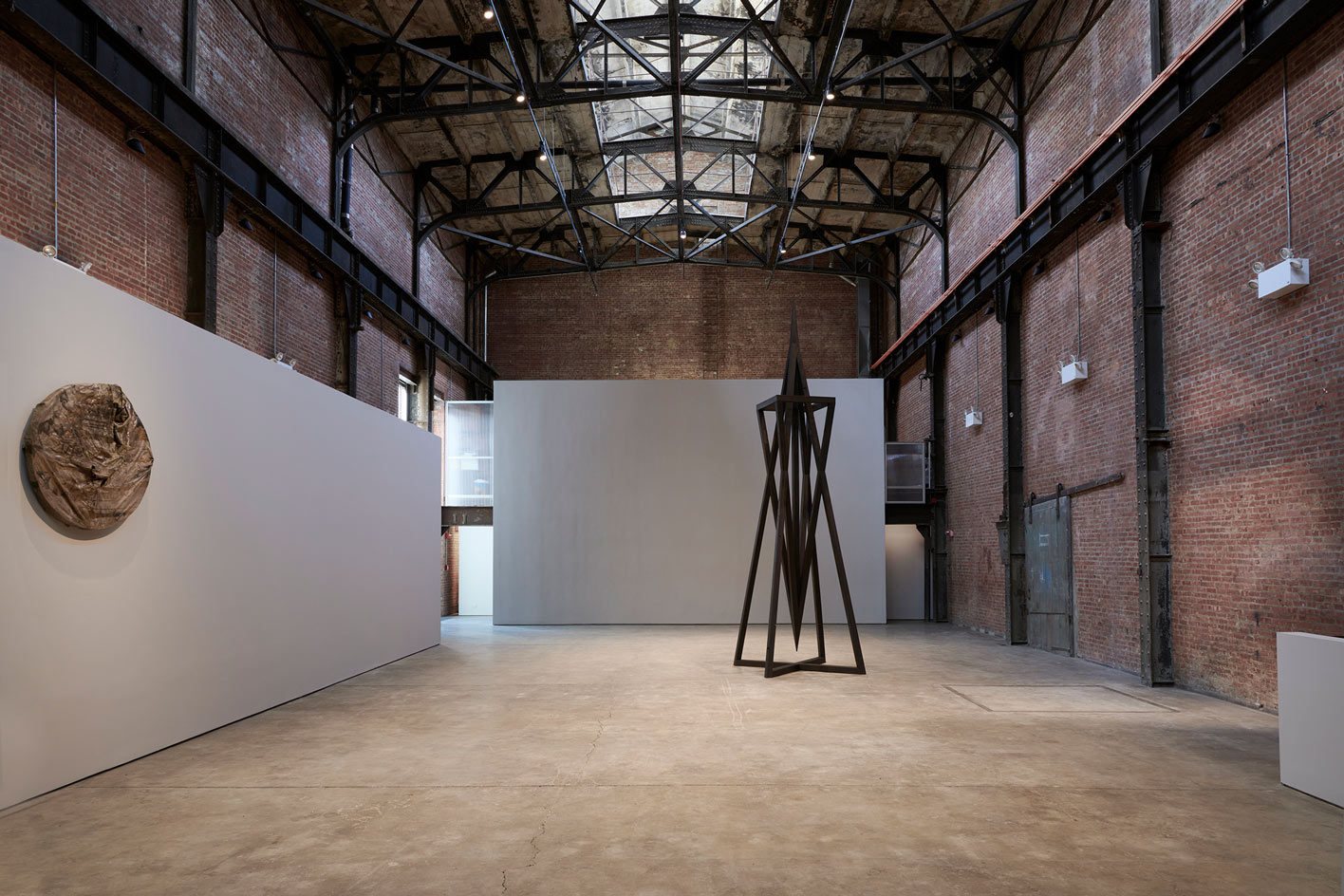
Rindon Johnson: ’Law of Large Numbers: Our Bodies’, installation view, SculptureCenter, New York, 2021.

Rindon Johnson, Coeval Proposition #2: Last Year’s Atlantic, or You look really good, you look like you pretended like nothing ever happened, or a Weakening, 2021. Realtime Portrait Animating Program, projectors, platform, computer. SculptureCenter, New York and Chisenhale Gallery, London Ghebaly Gallery, Los Angeles.
Wallpaper*: Your practice ranges from writing, sculptures to paintings, videos, installations, and VR. Language also plays an integral role; when did your fascination begin, and which writers have been major influences?
Rindon Johnson: I started to weave it into my visual practice in about 2016 and more seriously in 2017, really pushing my titles to take on more space and substance. This was also around the same time I was taking my poetry writing more seriously, starting to think about what was possible between the poem and the sculpture.
There are lots of writers who are influential to me: Octavia E. Butler, Ursula K. Le Guin, Lyn Hejinian. In Saidiya Hartman’s work, I am very curious and excited by the possible project of speculative fiction and collective imagining that she lays out in Venus in Two Acts. So there are two streams there about what fiction can do for us and acting that fiction, particularly in science fiction. I feel really strongly that we can imagine our future so science fiction is a great place to start to create a desirable other world.
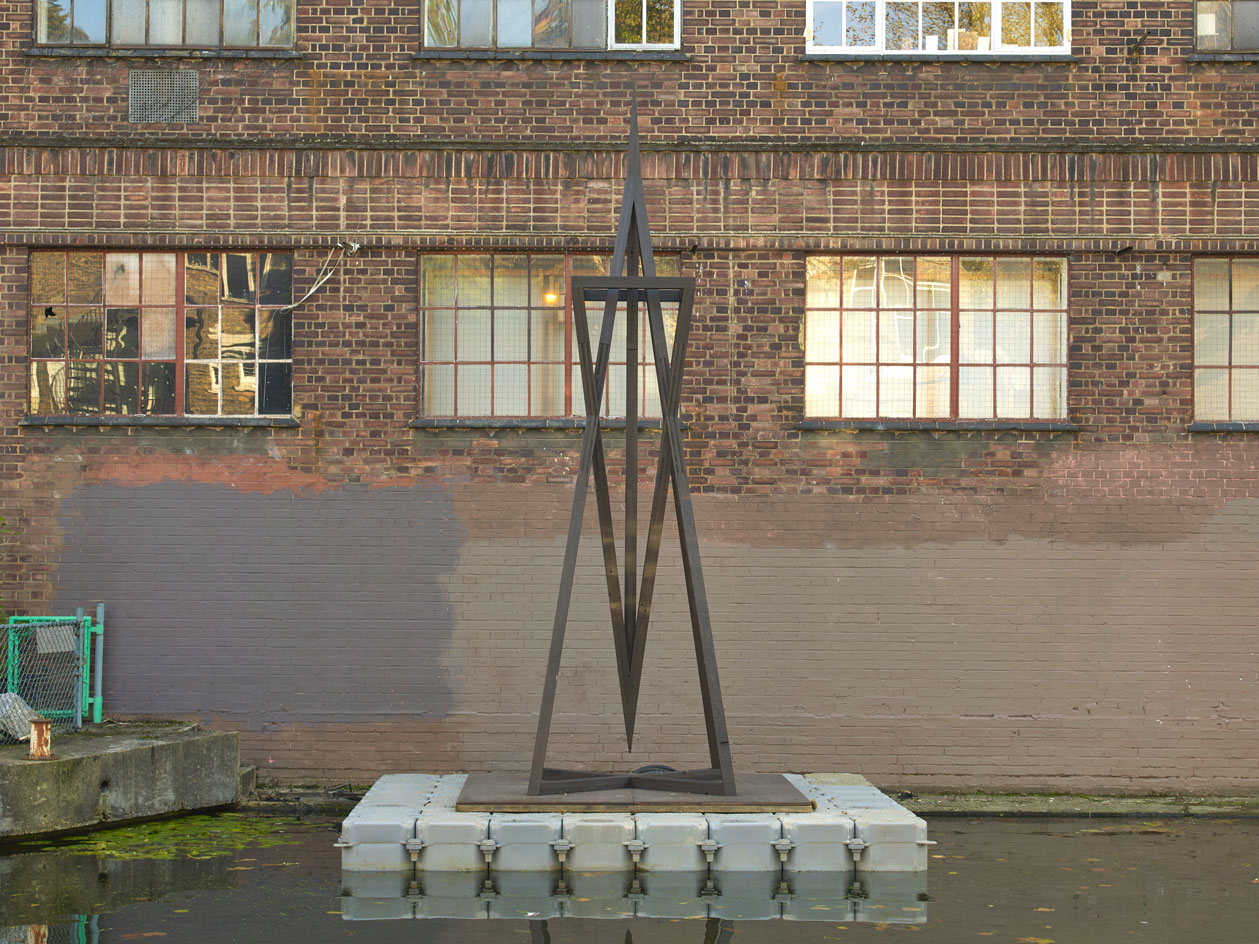
Rindon Johnson, Coeval Proposition #1: Tear down so as to make flat with the Ground or The *Trans America Building DISMANTLE EVERYTHING (2021). Installation view Hertford Union Canal, 2021. Commissioned and produced by Chisenhale Gallery, London and SculptureCenter, New York, 2021.
W*: ‘Law of Large Numbers: Our Bodies’ marks your first solo museum show. What does this mean to you, and what was the most challenging part of developing it?
RJ: Technically it’s my first solo museum show in the States, but I did have a show at the Julia Stoschek Collection in Dusseldorf in 2019; that was my first solo show. I feel blessed to have an exhibition at SculptureCenter. There are a lot of people who have been offered this opportunity who I look up to very much. I feel really honoured to get to dialogue with them in that way. And to work with a space like SculptureCenter and Chinsenhale and see what I can offer as my contribution to the history of these two spaces who have offered open platforms for artists like me for a long time, and have done so in a wonderful and exciting way.
As far as the most challenging part of developing the show, it’s always challenging developing a show, no matter the time, but it was hard not to be able to follow the usual parameters. There weren’t any IRL site visits possible and it occurred in a year that felt very intense for reasons that we all know. I got this amazing email from someone that said, ‘the circumstance we’re all in’ and I think that’s true, so given the circumstance we’re all in, it was more challenging than an alternate reality version of me might have found without the pandemic.
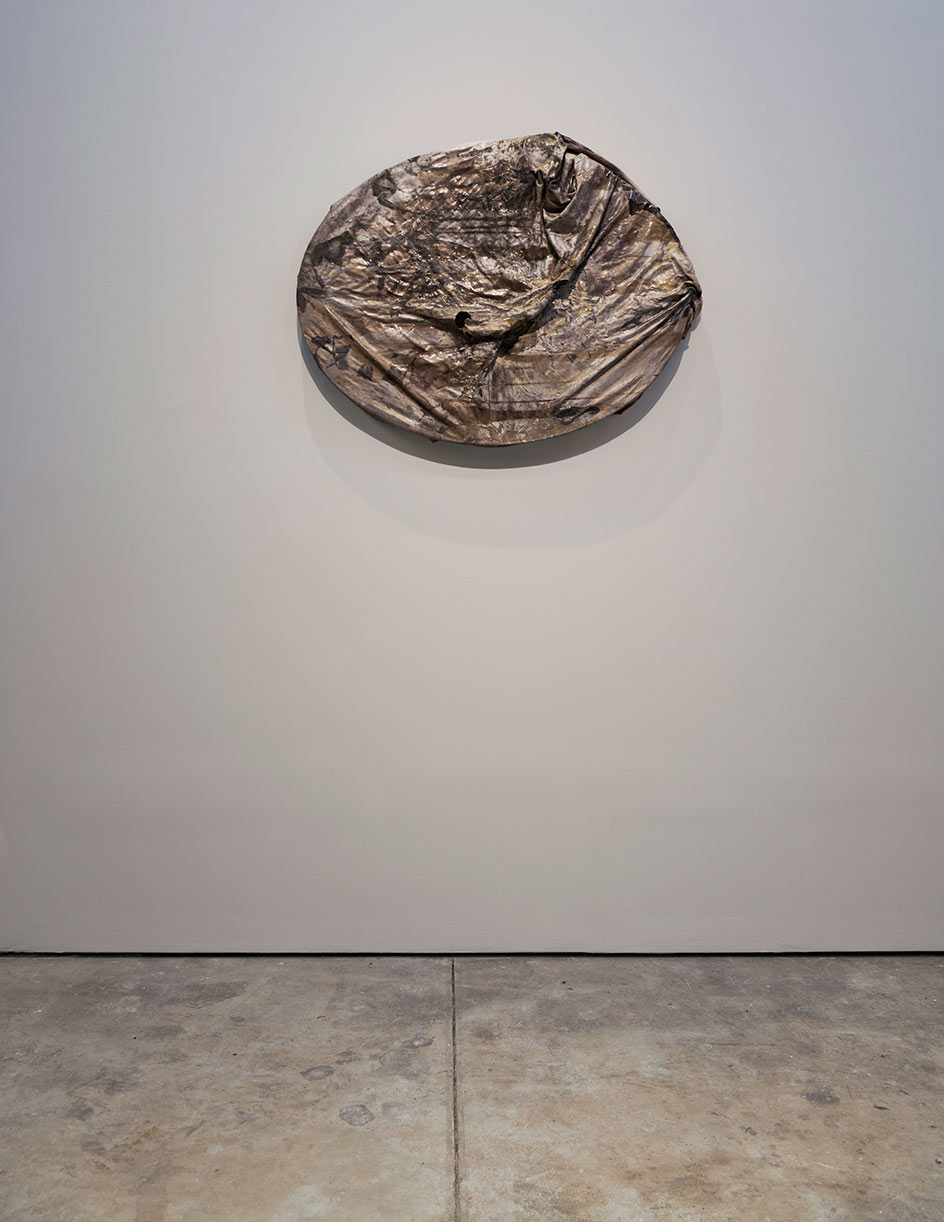
Rindon Johnson: 'Law of Large Numbers: Our Bodies', installation view, SculptureCenter, New York, 2021.
I think the challenge is always the translation, leaving room for a continuous translation. I feel like a good art show should have an ongoingness in the mind of the viewer so that even when the show comes down it continues to grow and shift and change just as the viewer grows and shifts and changes.
W*: What inspired the title of the show?
RJ: Inspired feels wrong, but the title of the show was informed by the oddness of the term itself, specifically in finance, when a company is growing exponentially, eventually, the company will begin to devour itself. There’s only one way to go eventually, and it’s downward. I just thought it was an interesting and terrifying thing. Then I was thinking about this book, Our Bodies, Ourselves (Boston Women's Health Book Collective) which was a big book in the 1970s and is credited with catalysing the new version of feminism and [in helping] women to learn about their bodies. I’m a trans person, and I’m asking that question all the time; my body, my self, I wanted to suggest an ‘our’ or a ‘we’ because we’re doing a lot of things together.

Rindon Johnson, Coeval Proposition #1: Tear down so as to make flat with the Ground of The *Trans America Building DISMANTLE EVERYTHING, 2021-ongoing. Redwood. Commissioned by Valeria Napoleone (VNXXSC) SculptureCenter, New York, and Chisenhale Gallery, London.
W*: One work, Coeval Proposition #1: Tear down so as to make flat with the Ground or The *Trans America Building DISMANTLE EVERYTHING, references the Transamerica Pyramid in San Francisco. What drew you to this building, and how did you create the work?
RJ: I’m a trans person, I’m from San Francisco, and it turns out there’s already a building named for the person that I am: the Transamerica Pyramid. So it felt like it should be mine. Because of the circumstance we’re in, the work was fabricated by an incredible studio called Tri-Lox in Greenpoint, Brooklyn and I’m grateful to Tri-Lox because they really understood the project and happened to be dealing with some reclaimed lumber from the New York City water towers which are redwood, from Northern California. There are other questions about what architecture is and who gets to control things, but ultimately the Trans America Building is about naming, who gets to name what and when and all of that.
Receive our daily digest of inspiration, escapism and design stories from around the world direct to your inbox.
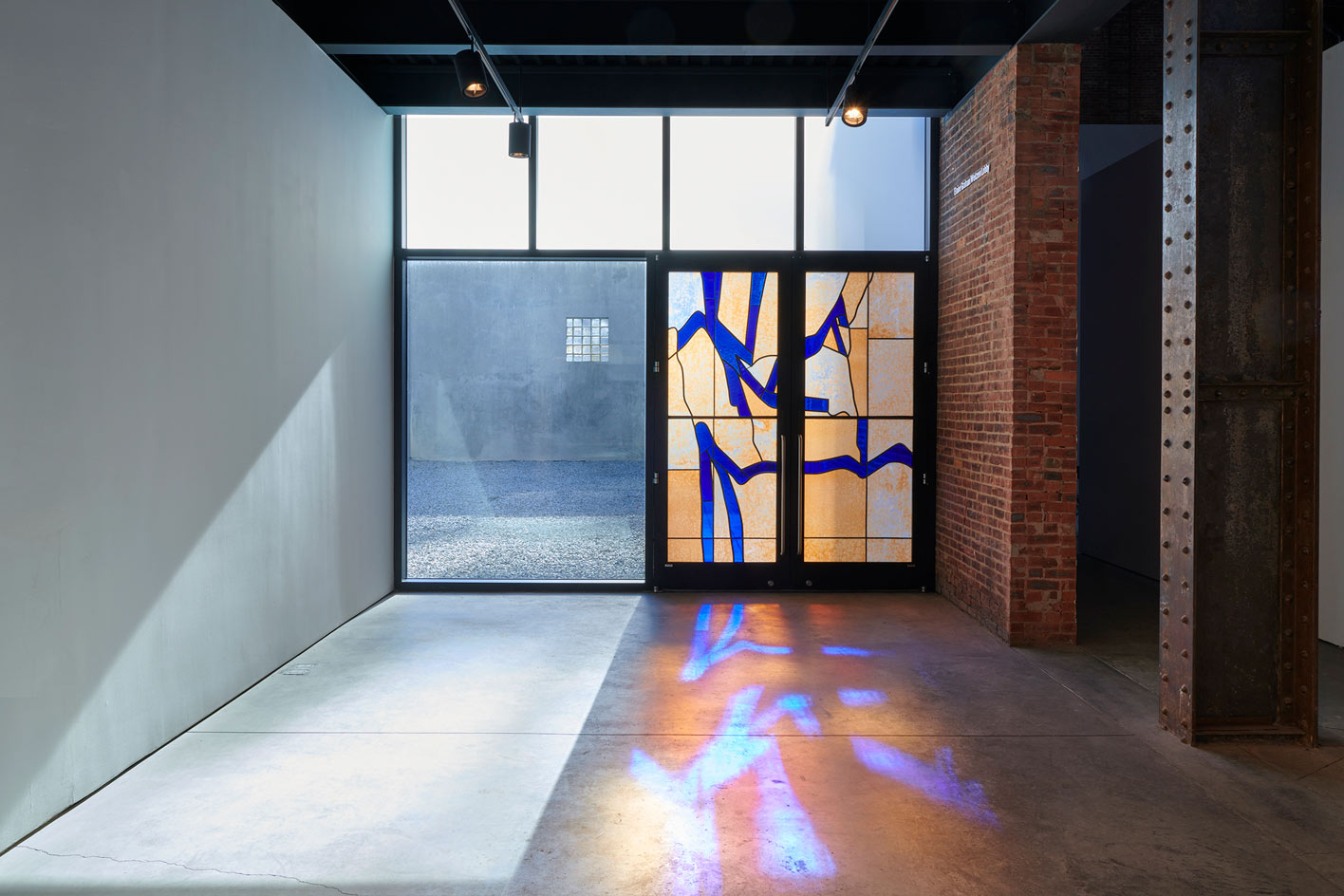
Rindon Johnson, Floating through the canyon, through the canyon, through the canyon, the Peace of Martial Law, the PEACE of Martial Law, the canyon walls are 2000 feet high, 2000 feet high, 2000 feet high, some rose-colored glasses, some rose-colored glasses, it is only a matter of time. No, this thing and not the other thing either. CREEK! It’s only a matter of time. Find me inside, many of us were scared, but after they ate a pizza from the backpack of a man who was taking a swim, they were looking for dessert. They found the bag and decided to take it away, 2021. Rose Brooks leaded stained glass. Courtesy the artist and Ghebaly Gallery, Los Angeles.
INFORMATION
'Law of Large Numbers: Our Selves', until 6 February 2022, Chisenhale Gallery, London. chisenhale.org.uk
Harriet Lloyd-Smith was the Arts Editor of Wallpaper*, responsible for the art pages across digital and print, including profiles, exhibition reviews, and contemporary art collaborations. She started at Wallpaper* in 2017 and has written for leading contemporary art publications, auction houses and arts charities, and lectured on review writing and art journalism. When she’s not writing about art, she’s making her own.
-
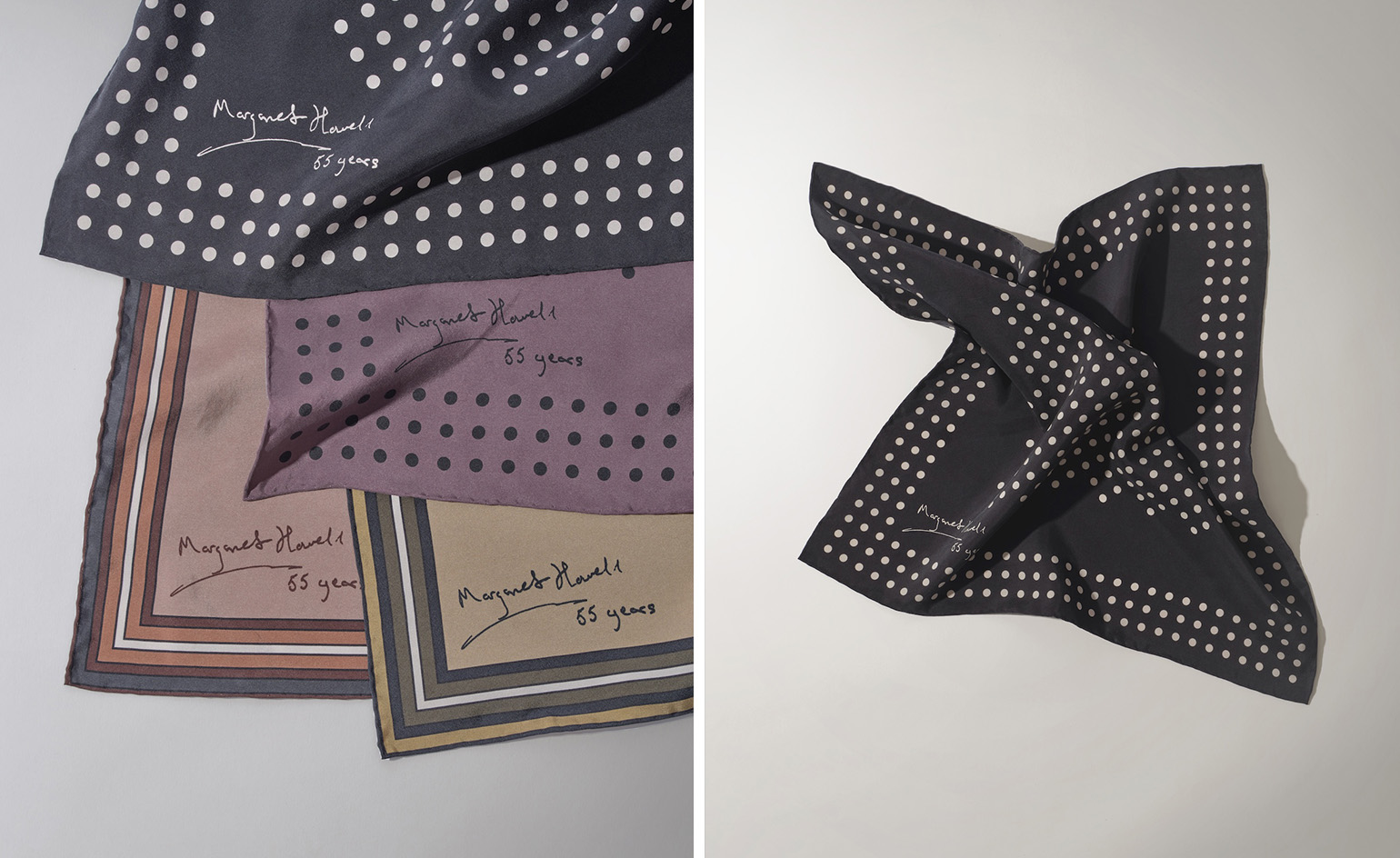 Margaret Howell marks 55 years in business by reissuing pieces from her archive
Margaret Howell marks 55 years in business by reissuing pieces from her archiveThe stalwart of British design will reissue a series of archival silk scarves to celebrate the landmark anniversary, alongside an era-traversing exhibition of foulards at the brand’s Wigmore Street store
-
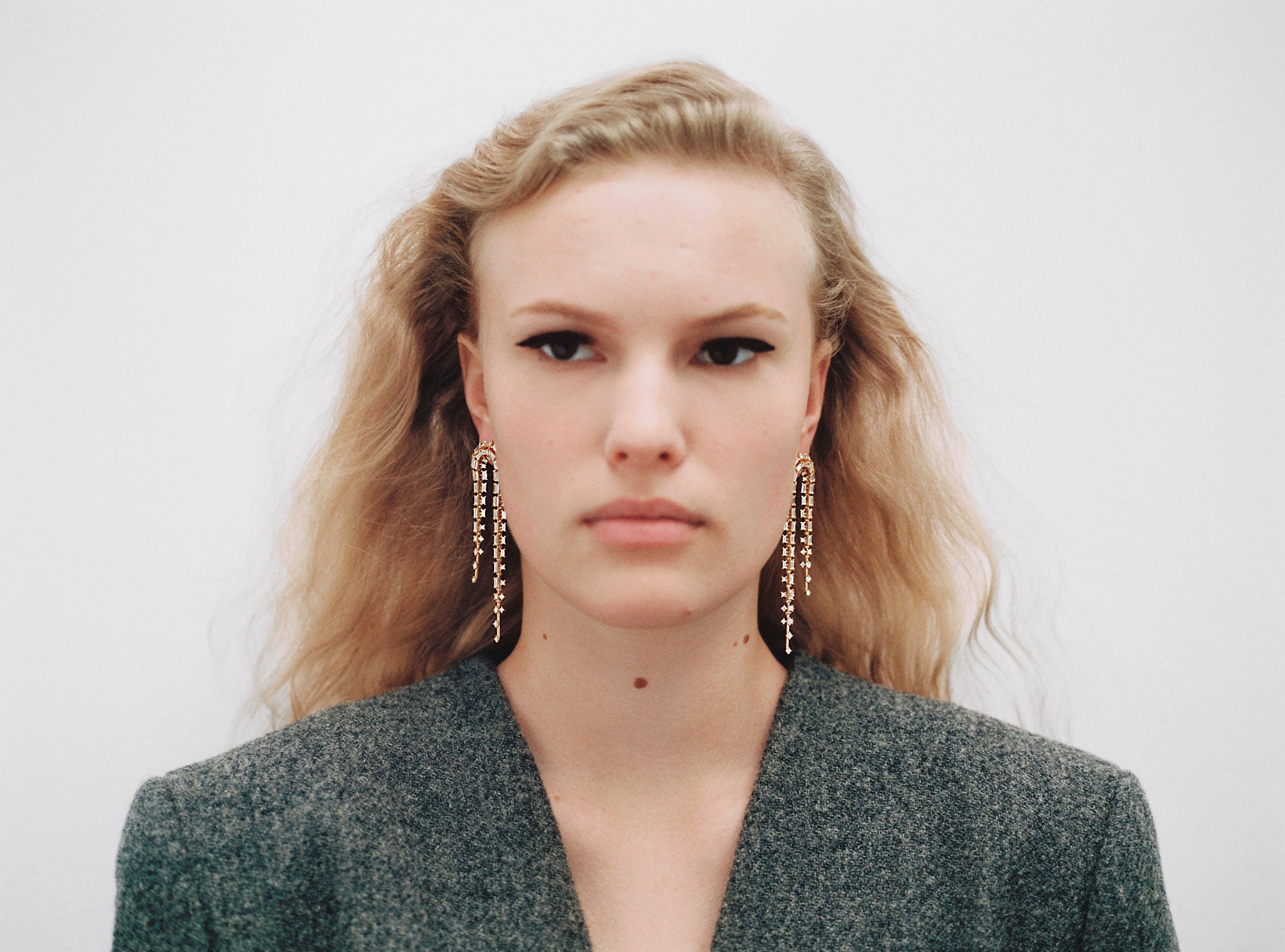 This season’s high jewellery smoulders in sunset shades
This season’s high jewellery smoulders in sunset shadesVivid hues and striking silhouettes combine in new high jewellery from Van Cleef & Arpels, Cartier and Tiffany & Co
-
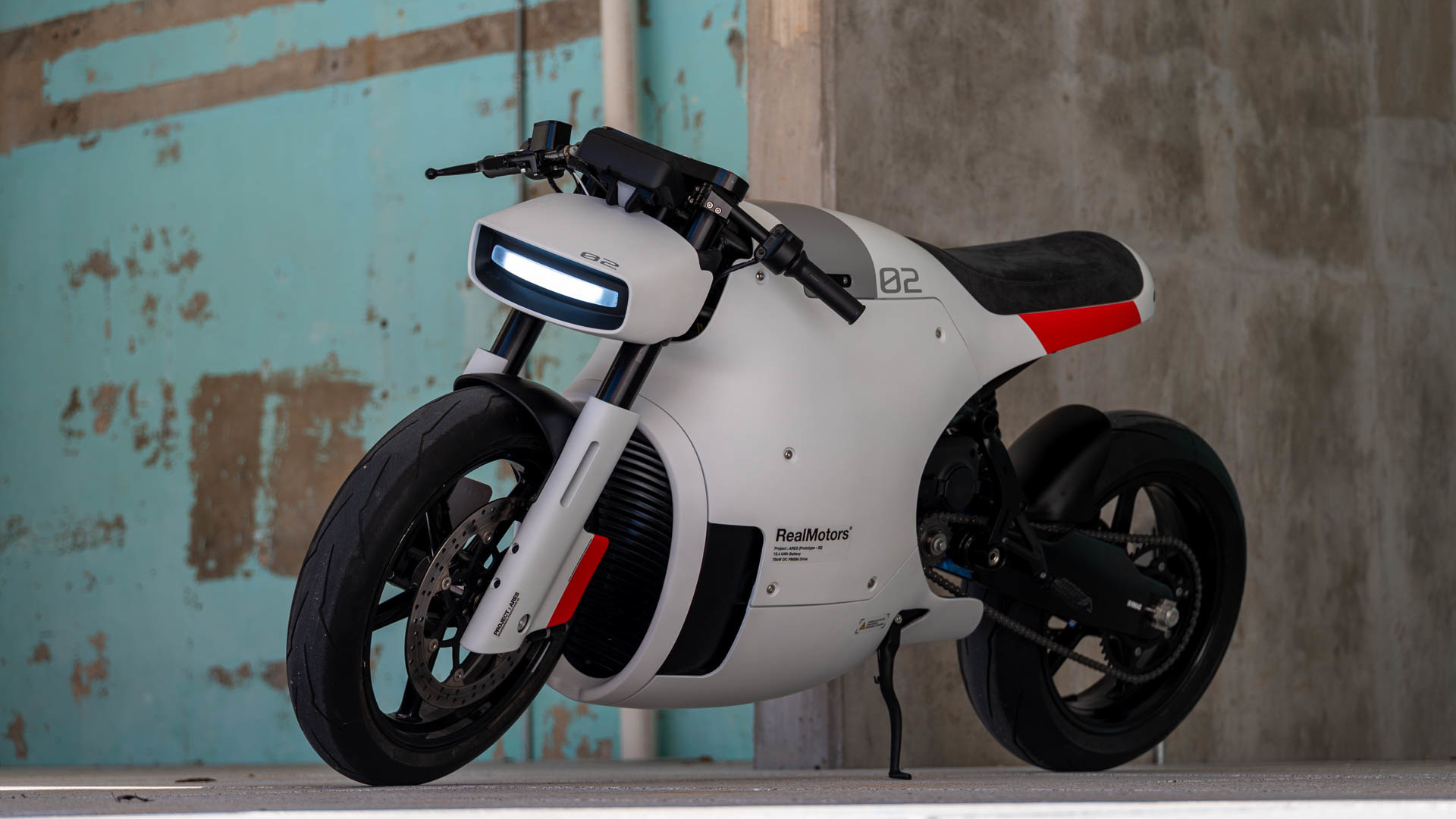 The Project : ARES motorbike combines sci-fi style, analogue feel and all-electric performance
The Project : ARES motorbike combines sci-fi style, analogue feel and all-electric performanceThe futuristic Project : ARES from Real Motors comes closer with the reveal of the production prototype in Las Vegas
-
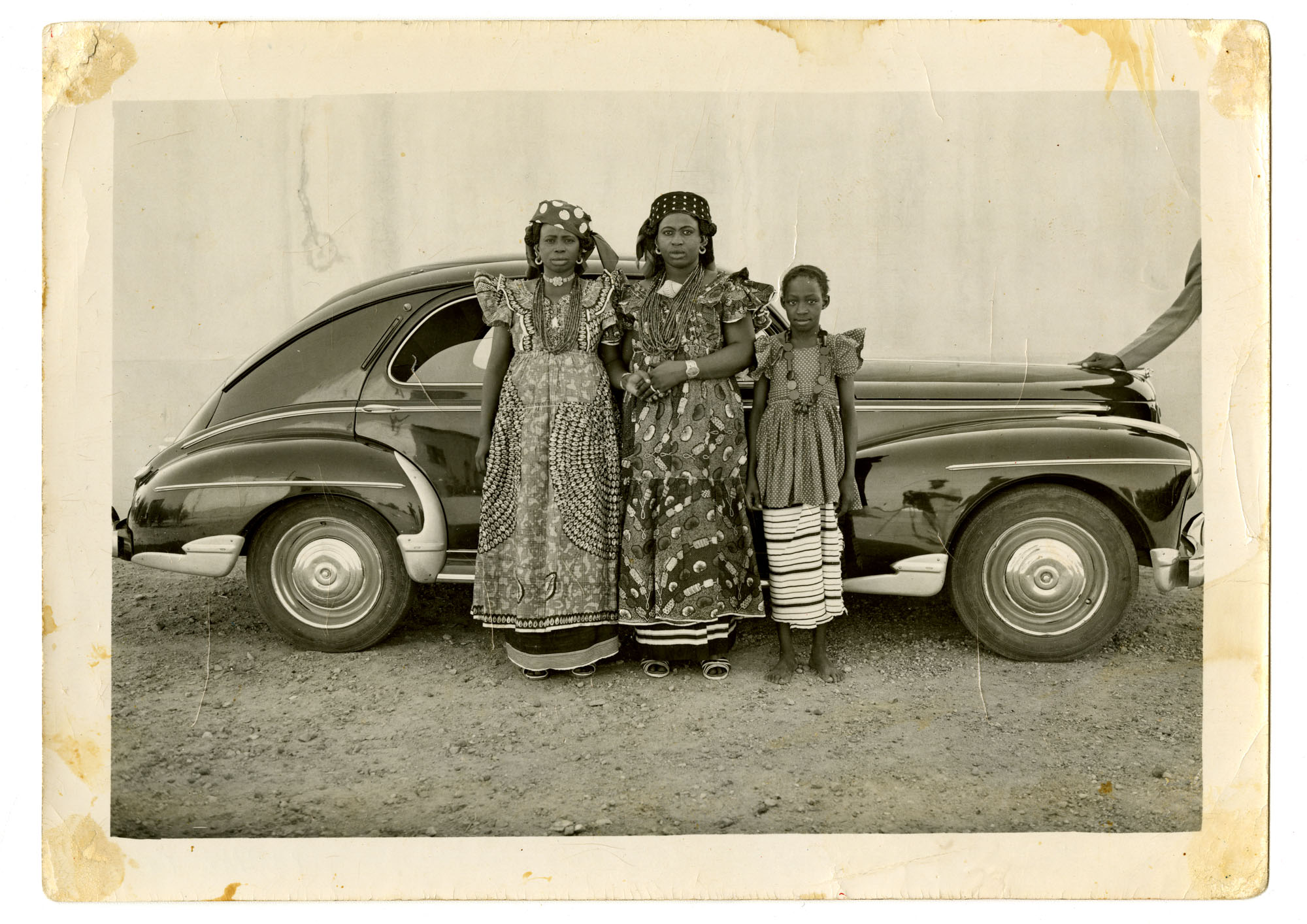 Inside the work of photographer Seydou Keïta, who captured portraits across West Africa
Inside the work of photographer Seydou Keïta, who captured portraits across West Africa‘Seydou Keïta: A Tactile Lens’, an exhibition at the Brooklyn Museum, New York, celebrates the 20th-century photographer
-
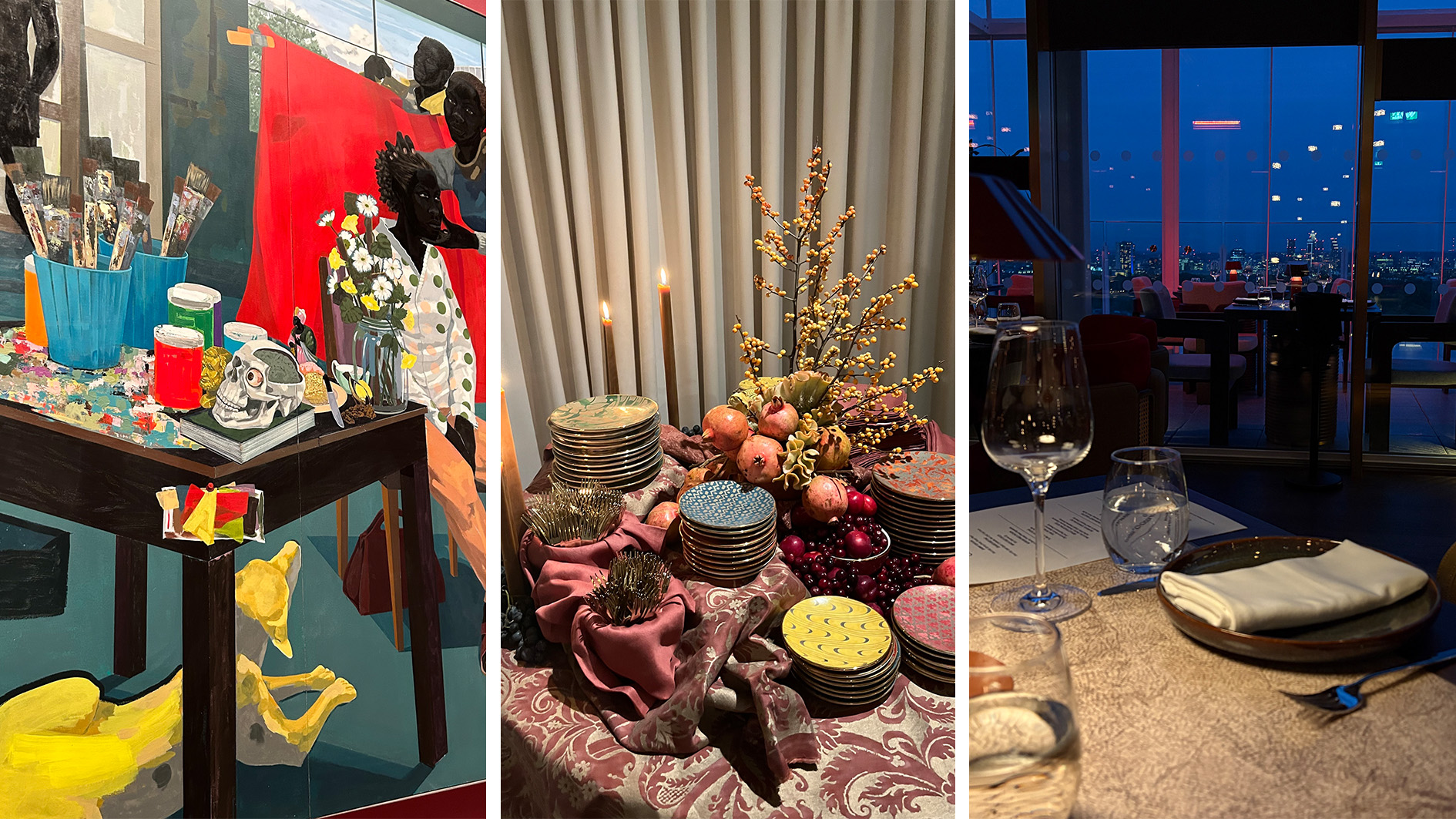 Out of office: The Wallpaper* editors’ picks of the week
Out of office: The Wallpaper* editors’ picks of the weekFrom sumo wrestling to Singaporean fare, medieval manuscripts to magnetic exhibitions, the Wallpaper* team have traversed the length and breadth of culture in the capital this week
-
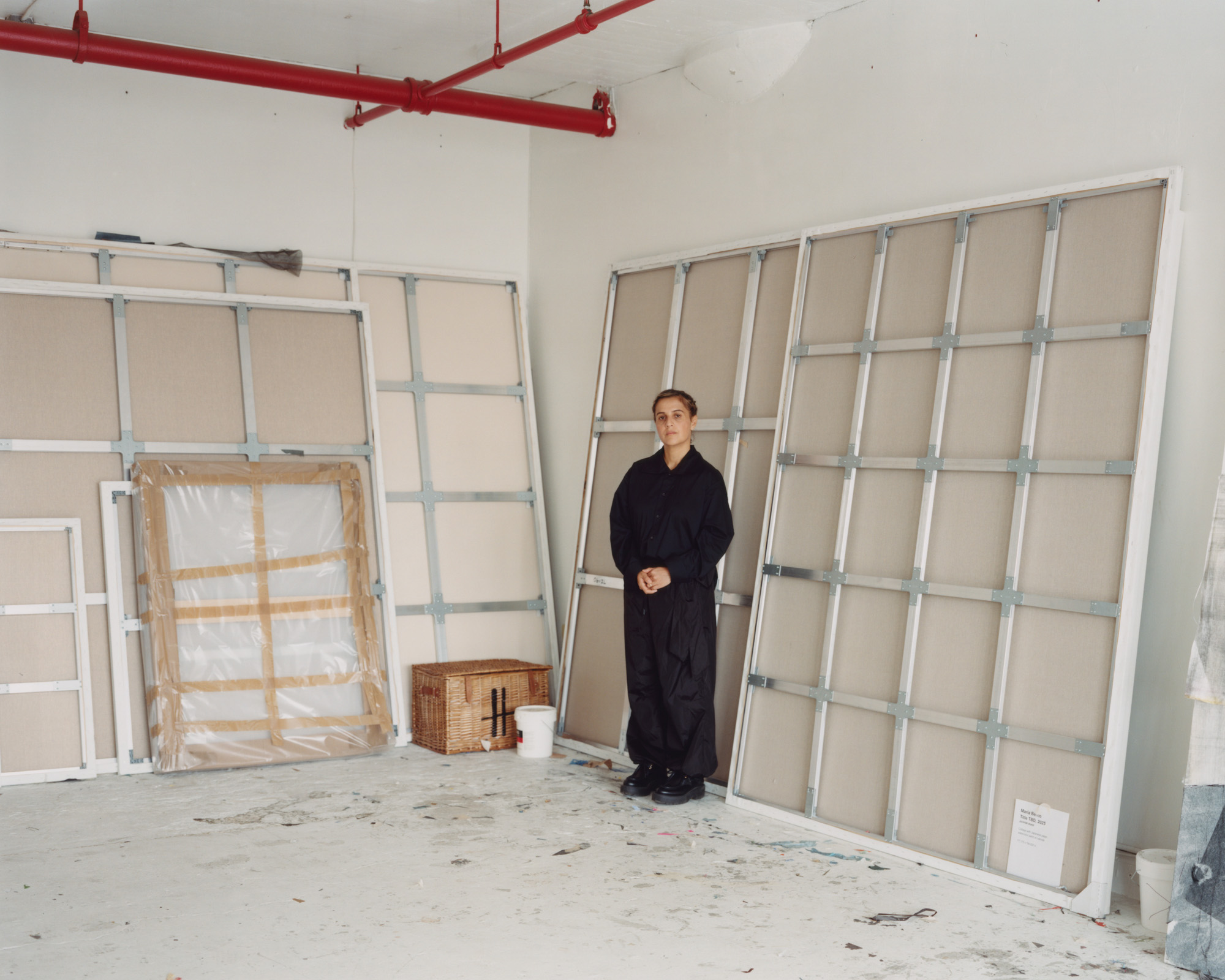 María Berrío creates fantastical worlds from Japanese-paper collages in New York
María Berrío creates fantastical worlds from Japanese-paper collages in New YorkNew York-based Colombian artist María Berrío explores a love of folklore and myth in delicate and colourful works on paper
-
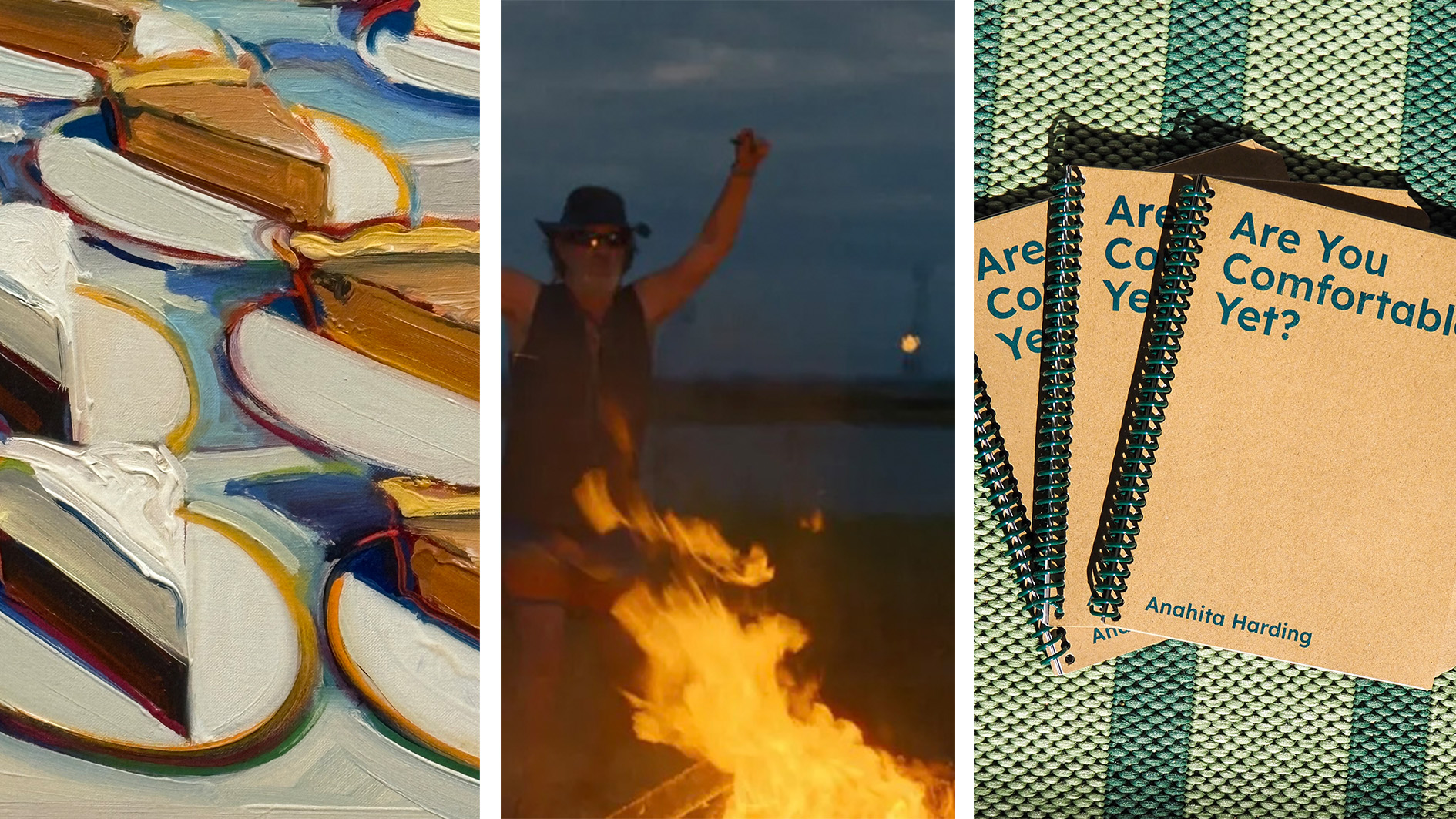 Out of office: the Wallpaper* editors’ picks of the week
Out of office: the Wallpaper* editors’ picks of the weekAs we approach Frieze, our editors have been trawling the capital's galleries. Elsewhere: a 'Wineglass' marathon, a must-see film, and a visit to a science museum
-
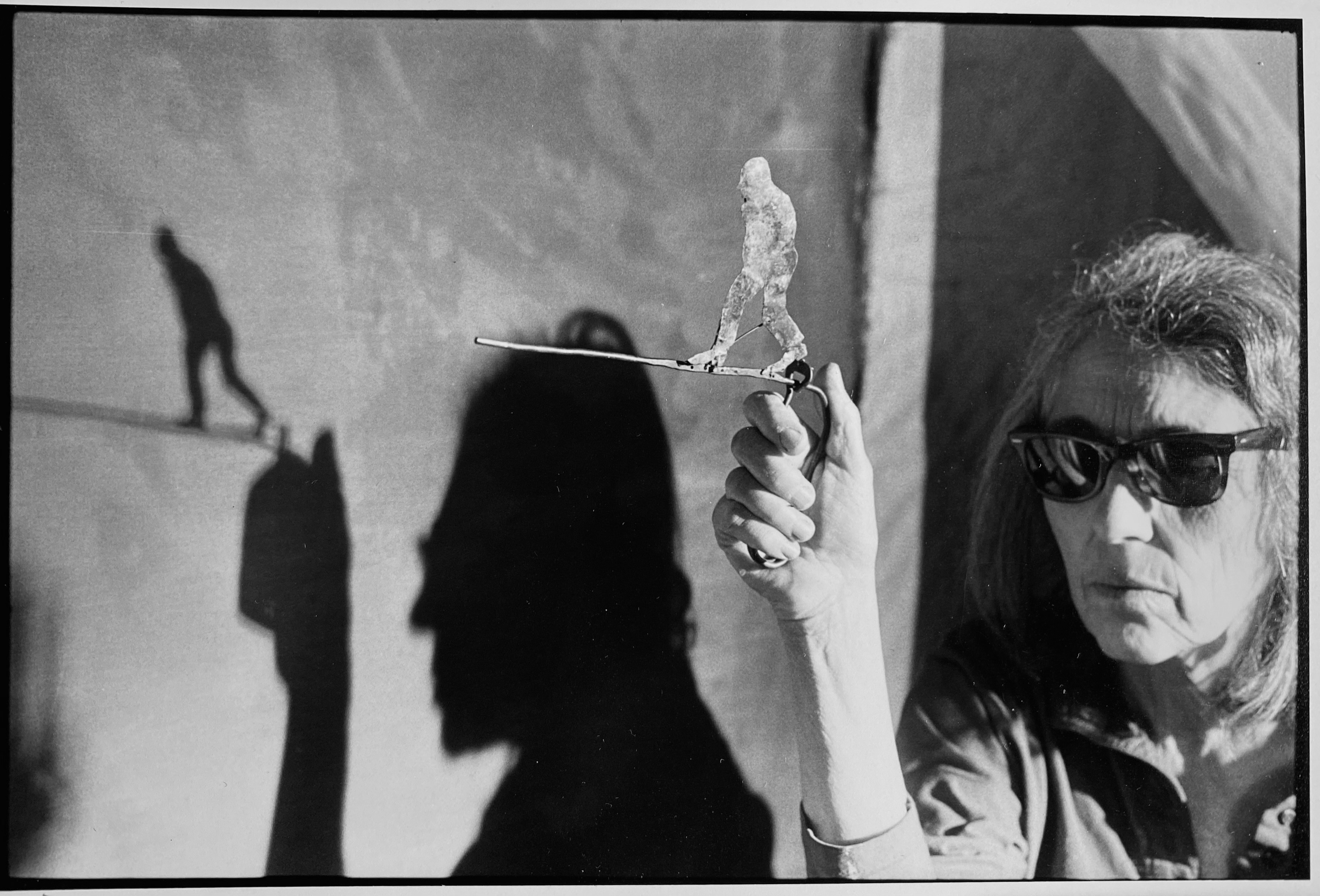 June Leaf’s New York survey captures a life in motion
June Leaf’s New York survey captures a life in motionJune Leaf made art in many forms for over seven decades, with an unstoppable energy and fierce appetite leading her to rationalise life in her own terms.
-
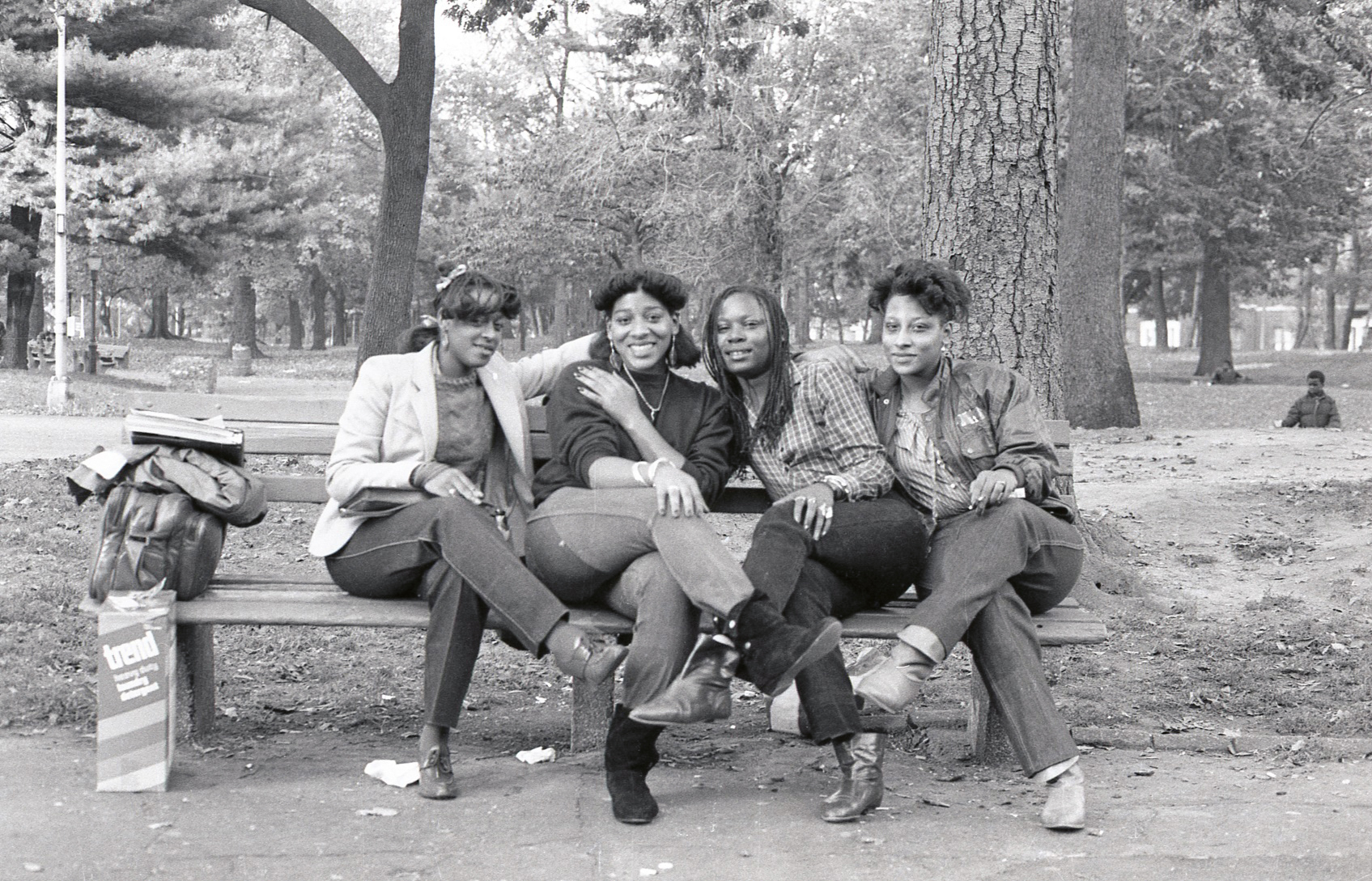 Jamel Shabazz’s photographs are a love letter to Prospect Park
Jamel Shabazz’s photographs are a love letter to Prospect ParkIn a new book, ‘Prospect Park: Photographs of a Brooklyn Oasis, 1980 to 2025’, Jamel Shabazz discovers a warmer side of human nature
-
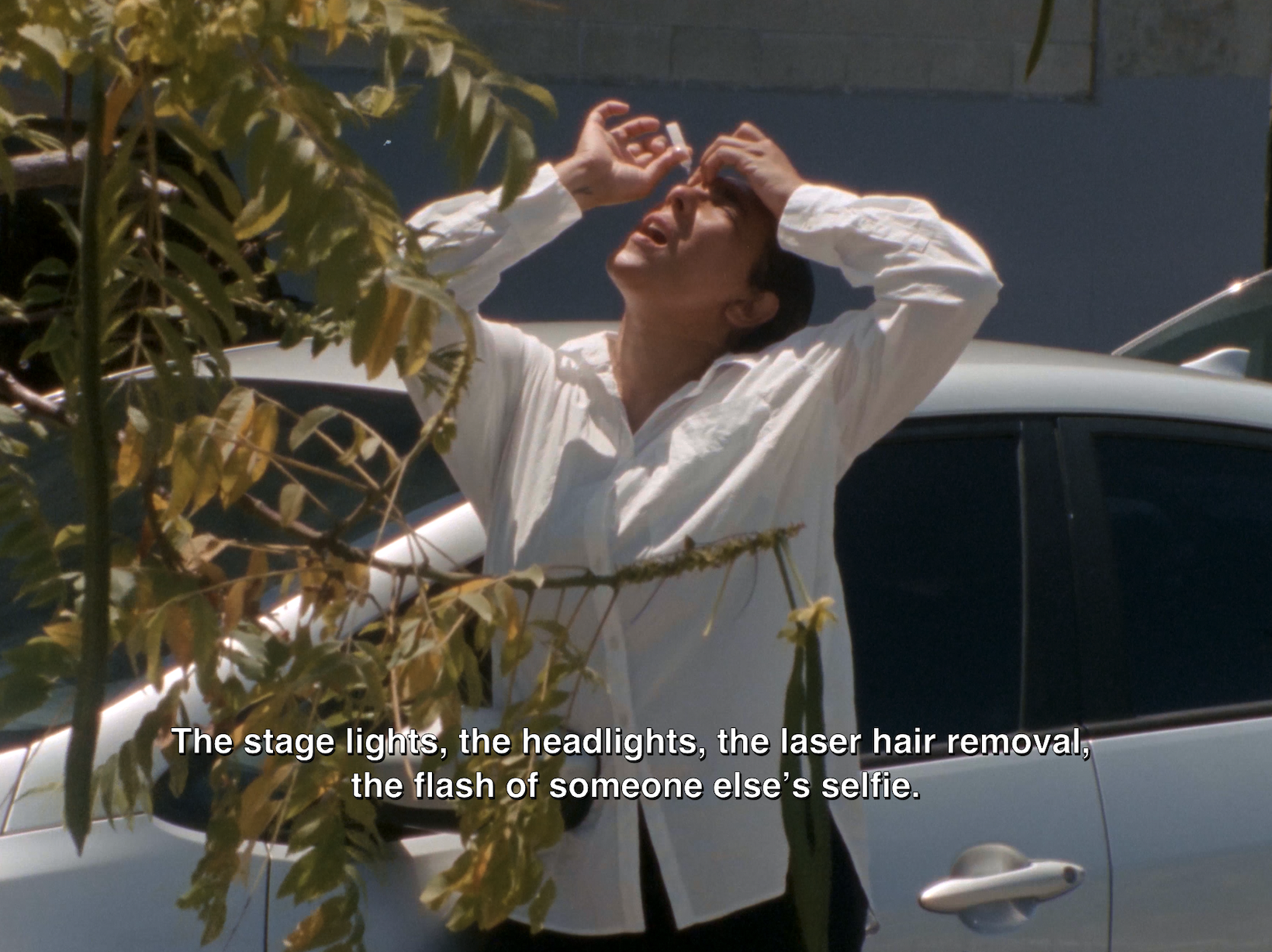 The Hammer Museum in Los Angeles launches the seventh iteration of its highly anticipated artist biennial
The Hammer Museum in Los Angeles launches the seventh iteration of its highly anticipated artist biennialOne of the gallery's flagship exhibitions, Made in LA showcases the breadth and depth of the city's contemporary art scene
-
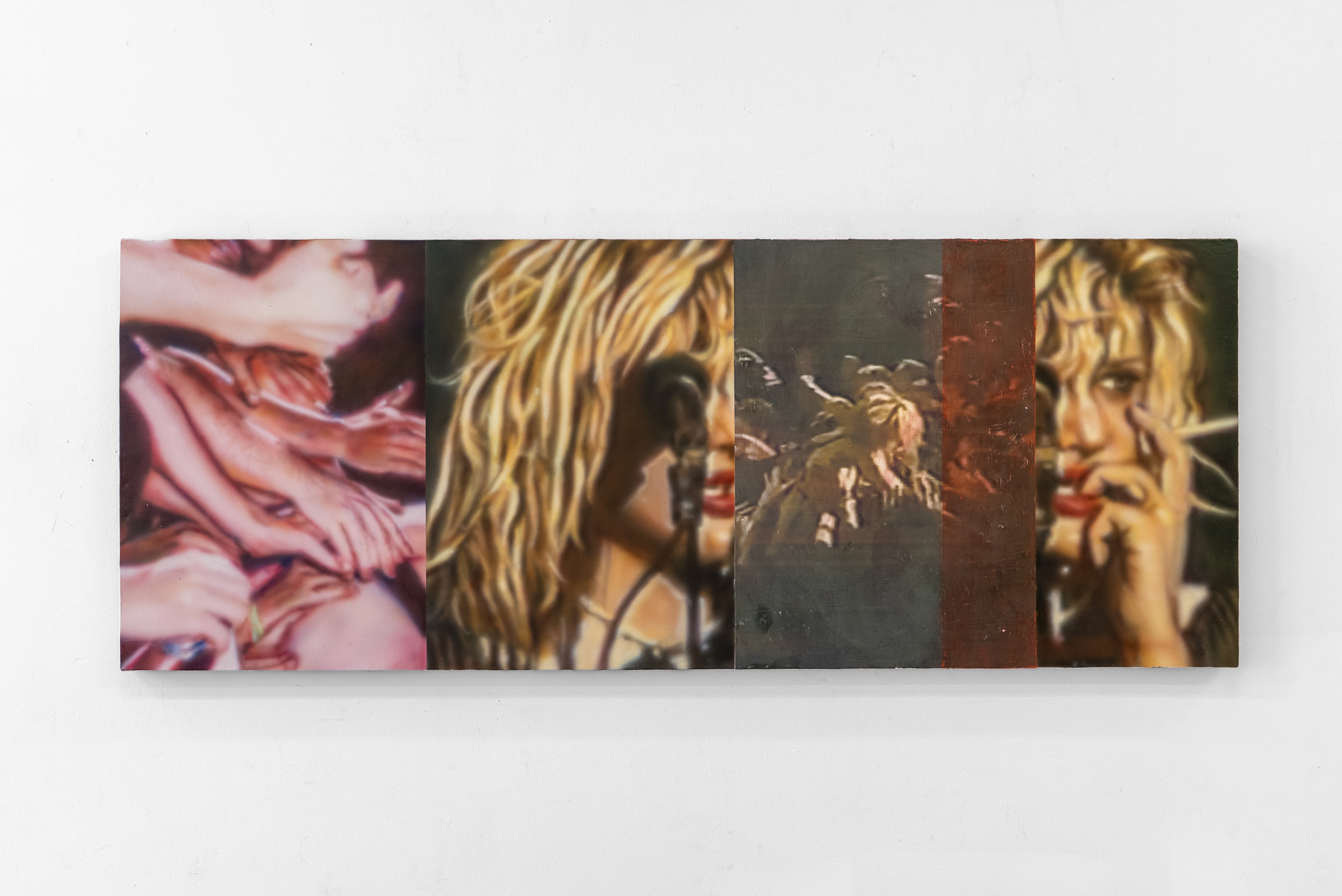 Inside a Courtney Love-inspired art exhibition in New York
Inside a Courtney Love-inspired art exhibition in New YorkLiza Jo Eilers looks to the glory days of Hole at an exhibition at Grimm New York